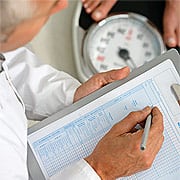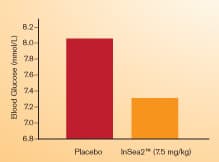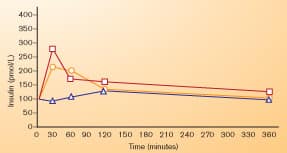Life Extension Magazine®
If we travel back to the early 1980s, a diagnosis of AIDS resulted in near-certain death within a year or two. The development of single-agent antiviral drugs provided HIV-infected individuals with only a brief reprieve. It was not until the implementation of multi-modal drug “cocktails” that HIV became a manageable disease. The successful use of “multi-modal” therapy is by no means limited to HIV treatment. Cardiologists often prescribe multiple drugs (including prescription fish oil and niacin) that function via a wide range of mechanisms to restore the health of those stricken with severe heart disease.
Likewise, progressive oncologists long ago realized that successful cancer treatment mandated the implementation of multi-modal approaches to control malignant cell proliferation. The scientific community now recognizes the role that obesity plays in the induction of age-related diseases and early death.1 The lethal consequences of even a few extra pounds have led to public outcries that Americans have to shed excess fat. In this article, we introduce a novel multi-modal nutritional strategy to remove excess body fat stores, especially in the abdominal region. Peer-reviewed scientific studies substantiate impressive results using the individual components of this program. This multi-modal approach is an important first step that overweight and obese individuals should initiate to achieve maximal weight loss. A question middle-age people ask is why they amass so much body fat while eating less than when they were younger and thinner. Scientists have identified a number of biological factors to explain age-related weight gain, yet effective programs to restore youthful body contours remain elusive. A major impediment to circumventing the causes of weight gain is the simple fact that there are so many causes. The encouraging news is that there are more scientifically documented weight-loss compounds to neutralize these obesity factors than ever before. When used in controlled clinical studies, these compounds have demonstrated modest to impressive fat-loss effects. These same benefits are not always duplicated in real world settings. What has yet to be done, up until now, is combine scientifically validated compounds into a multi-modal program that circumvents every known factor involved in excess age-related fat storage. The Age-Related Decrease in Cellular Energy ExpenditureWe know that one factor involved in age-related weight gain is a decrease in resting energy expenditure at the cellular level. What this means in simple terms is that we are not burning fat as energy and instead are storing it in our adipocytes (fat cells). Our bloated outer appearance reflects this relentless engorgement of surplus fat into our adipocytes.
Scientists have found that the decrease in energy expenditure with aging may cause 120-190 excess calories to be stored in the body every day.2 This translates to an extra 13-20 pounds of stored body fat each year. Based on these data, the restoration of a more youthful metabolic rate is one critical factor in inducing weight loss in aging people. Fortunately, a patented green tea delivery system has been documented to significantly enhance weight loss and reduce abdominal waist circumference in humans. As you will read, however, this remarkable new green tea phytosome delivery system is only one part of a multi-modal solution to do away with surplus body fat. The Making of a Superior Green Tea CompoundA number of published studies demonstrate weight-loss effects in response to ingesting green tea or specific tea extracts. A problem identified early on is getting enough of green tea’s active constituents absorbed into the bloodstream and delivered to cells throughout the body.
The key components responsible for green tea’s weight-loss benefits are the polyphenol compounds that increase metabolic energy expenditure and hence calorie consumption.3-7 Scientists realized that these polyphenols would be more effective if their absorption from the intestinal tract could be increased and thus deliver more of the metabolically active agent to the tissues.8-11 A group of Italian researchers created biological complexes of purified green tea polyphenols combined with phospholipids. This unique green tea phytosome was shown to increase the polyphenols’ ability to be absorbed after oral ingestion and increase peak plasma levels of the critical green tea polyphenol epigallocatechin gallate (EGCG). After oral ingestion of an equal dose of EGCG complexed with phospho-lipids, the peak plasma level was 138% greater than for EGCG alone! Furthermore, the total amount of EGCG measured over time was about three times greater for the phospholipid complex than for the free form alone!8 Dramatic Weight Loss!When this purified green tea phytosome was tested on human subjects, the weight-loss effects were rapid and substantial. This in-depth multicenter clinical trial involved 100 significantly overweight participants.8 Half the group received the green tea phytosome (two 150 mg tablets daily). Both groups were placed on reduced calorie diets (approximately 1,850 calories/day for men and 1,350 calories/day for women). After 45 days, the control group lost an average of around four pounds. The group receiving the green tea phytosome supplement dropped an average of 13 pounds—more than triple the amount of the control group. After 90 days, the results were virtually unprecedented! The control group that followed the restricted calorie diet alone lost 9.9 pounds. The green tea phytosome-supplemented group shed a total of 30.1 pounds—again more than triple the amount of weight loss compared with the control group!8 Impressive Reduction in Abdominal CircumferenceStudy subjects in the group receiving the green tea phytosome had a 12% decrease in their body mass index (BMI) compared with only 5% decrease in the diet-alone group.8 In the all-important measurement of waist circumference (abdominal girth), there was a 10% reduction in the green tea phytosome group compared with a 5% reduction in the diet-alone group. Male participants did even better in this category, showing a 14% reduction in waist circumference compared with a 7% reduction in the control group.8
Green Tea Does More Than Boost Metabolic RateIf increasing resting metabolic rates is all it took to remove excess body fat stores, today’s obesity epidemic would largely disappear. We now know that this is only one part of a multi-modal solution.
Aging diminishes the ability of our cells to utilize even the reduced amounts of fats and sugars we ingest. This phenomenon is clearly demonstrated by the age-induced increase of glucose, triglycerides, cholesterol, and dangerous fat remnants in our blood. Simply stated, as we age, we have a reduced metabolic capacity to make use of the fats and sugars we eat throughout the day. The result is that our bloodstreams become chronically bloated with artery-clogging and obesity-inducing dietary byproducts. A proven way to reverse the chronic fat-sugar overload in our blood is to impede its absorption from the digestive tract. While there are drugs that effectively do this, green tea extracts have demonstrated promise as inhibitors of fat absorption.12,13 The ability of green tea to inhibit absorption of ingested fat calories may explain some of the observed vascular risk reduction that had been previously ascribed purely to its antioxidant effects.14 How Green Tea Inhibits Fat Absorption and Fat Accumulation in CellsFrench researchers released a landmark paper demonstrating that a green tea extract inhibited the breakdown of fat molecules in the digestive tract that enable these fats to be absorbed from the intestine.12 They found that green tea extract could inhibit fat-digesting enzymes in the stomach and small intestine in animal studies, concluding that “green tea extract exhibiting marked inhibition of digestive lipases is likely to reduce fat digestion in humans.”12 Researchers at Rutgers University demonstrated much more recently that these fat-absorption-reducing effects of green tea extracts could inhibit the development of obesity, the metabolic syndrome, and fatty liver disease in mice.15 Korean researchers last year showed that green tea extracts could reduce weight gain in mice by impeding dietary fat absorption and by modulating activity of the gene target PPAR-gamma.16 In another 2008 report, the same team demonstrated that certain green tea extracts prevent fat from accumulating inside fat cells.17 Reduction of Obesity Factor Blood MarkersThe new green tea phytosome demonstrated still other benefits that help to explain how it induced so much fat loss in the human study (described on the previous page). In the diet-alone control group, total cholesterol dropped 10% and triglycerides by 20%. These reductions are expected in response to a reduction in calorie intake.8 In the green tea phytosome-supplemented group, however, total cholesterol dropped 25% and triglycerides by 33%.8 As will be discussed in this issue of Life Extension®, an important element involved in successful weight loss is to purge excess fat (triglycerides) from the bloodstream. Study subjects taking this green tea phytosome significantly reduced their blood levels of triglycerides (and cholesterol). This may help explain the remarkable reduction of 30.1 pounds of body weight experienced by those receiving this novel polyphenol compound most aptly named TeaSlender™ Green Tea Phytosome. There has been a veritable explosion of research into how green tea extracts affect every aspect of obesity, from inhibition of fat breakdown and absorption in the digestive tract, to reduction in fat storage within cells, to enhancement of metabolic rate with concomitant increased energy consumption.3,16-18 All of these benefits indicate an important role for green tea in helping to prevent the deadly metabolic syndrome, a constellation of disease risk factors that are often initiated by obesity.19,20 How Carbohydrates Induce Weight GainThe weight-loss effects of blocking dietary fat absorption are not as profound as one might expect. One reason is that in the aging body, carbohydrates absorbed into the bloodstream are readily transformed into triglycerides, which is the primary form that fat is stored in the adipocytes.
The aging body develops a resistance to the ability of insulin to transport glucose into the body’s energy-producing cells. This excess glucose promotes chronic secretion of insulin into the bloodstream (hyper-insulinemia), and chronically elevated insulin levels are associated with excess fat storage and degenerative diseases. As excess glucose accumulates in the blood, it is converted by an enzyme (glycerol-3-phosphate dehydrogenase) into triglycerides for storage in the adipocytes (fat cells). Scientists refer to the chronic bloodstream-overload of sugars and fats as postprandial disorders. The term postprandial is defined as “after meal.” For significant and sustained fat loss to occur, one should reduce postprandial blood levels of both sugar (glucose) and fat (triglycerides). | |||||||||








